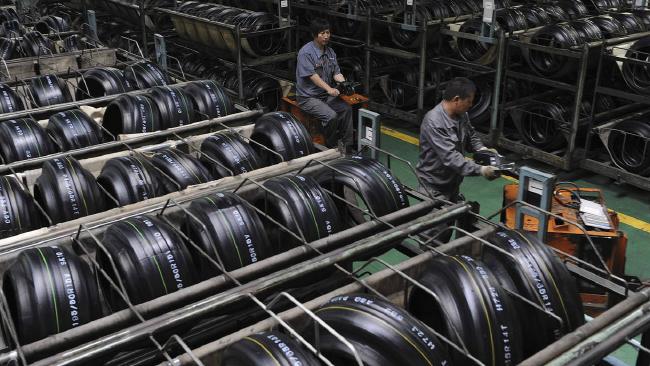The world’s leading rubber market isn’t doing its job.

Tokyo’s rubber market has been left behind by a shift in trading to other parts of Asia.
Daily trading volumes in rubber futures on the 65-year-old Tokyo Commodity Exchange have slumped by 75 per cent in the past decade and are down by nearly 11 per cent this year. As trading on the so-called Tocom has fallen, prices have become much more volatile, with weekly moves of 5 per cent or more a common occurrence.
Rubber producers — primarily thousands of small farmers based in Indonesia, Thailand and Malaysia — now rarely trade on the faraway market, largely because it is too costly and complicated.
Meanwhile, big rubber consumers, such as tyre makers Michelin and Bridgestone, find the market’s volatility and lack of liquidity a turn-off.
With such natural buyers and sellers of rubber futures largely absent, analysts say prices on the Tocom market aren’t an accurate gauge of actual supply and demand of the commodity that is also used in making rubber gloves and condoms.
And they say Tocom rubber contracts don’t fulfil some of the basic functions of any futures market: to help producers and consumers lock in profits, and to provide an accurate benchmark for some $US20 billion ($26.2bn) worth of bilateral rubber contracts signed each year globally.
“We’re seeing that most tyre majors and producers are not using futures trading to hedge their positions,” said Ranveer Chauhan, global head of oil palm and natural rubber at Olam International, which produces rubber in Africa and trades it through Asia.
Tokyo’s rubber market has been left behind by a shift in trading to other parts of Asia, but its own missteps haven’t helped.
Its decline began when the Japanese government brought in new regulations around a decade ago, designed to protect small investors from unscrupulous brokerages pushing them to buy into commodities. The stricter rules deterred these investors from the market, causing trading volumes to start falling.
Meanwhile, a major shift in tyre manufacturing got under way, with large amounts of production moving to China, where costs are much lower. Output by China, the world’s top tyre maker, has risen sharply, while production in Japan has dropped by more than one-fifth as the country’s economy stalled.
To hedge their costs, Chinese tyre makers mostly use rubber contracts traded on the Shanghai Futures Exchange — a market where the presence of many speculative retail investors has helped push daily trading volumes up nearly fivefold in the last decade.
Tocom has also lost ground to the Singapore Futures Exchange. The rubber futures contract there is based on a block form of the commodity preferred by tyre manufacturers, whereas Tocom futures are underpinned by rubber sheets whose quality can be inconsistent.


























